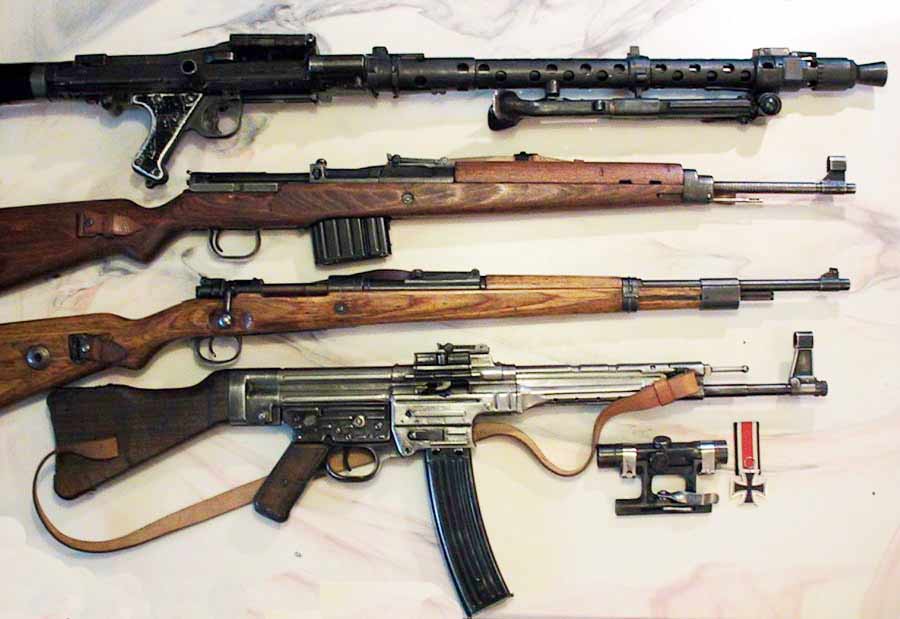
From top to down:
Machinengewehr 34 (MG34)
Gewehr 43 (G43)
Karabiner K98k (K98)
Sturmgewehr 44 (StG44)
The most common
German two handed weapons of WW2.
 |
|
From top to down: Machinengewehr 34 (MG34) |
These weapons were used in common by the Germans in Norway and Denmark.
|
For more detalis pictures and
background history in Swedish
Please GO TO the articles page |
 |
| Machinengewehr 34 (MG34) |
|
Year Built: 1934-1945 Calibre: 7.92x57mm Load: continuous belt feed / 75-round belt less saddle drum Action: Semi / Fully-Automatic, Air Cooled Rate of Fire: 800-900rpm Weight: 12,1 kg
|
| The Maschinengewehr 34, or MG34, was a
German machine gun first issued in 1934, considered by many to be the first modern general-purpose machine gun. MG34 was used as the primary infantry machine gun during the WW2. It was intended that it would be replaced in infantry service by the related MG42, but there were never enough of MG42 so production continued until 1945. The MG34 was designed primarily by Heinrich Vollmer from Mauser Werke. He based the MG34 on another German construction - the MG30 produced by Solothurn in Switzerland. MG34 saw first service in the Spanish Civil War. It provided the soldier with the world's first machine gun that was fully capable of providing a high volume of sustained firepower without sacrificing speed of movement or tactical flexibility. Today, every military power in the world employs machine guns, that have evolved from the basic configuration and principles of the MG34
|
|
Machinengewehr 42 (MG.42)
Year Built: 1942-1945 |
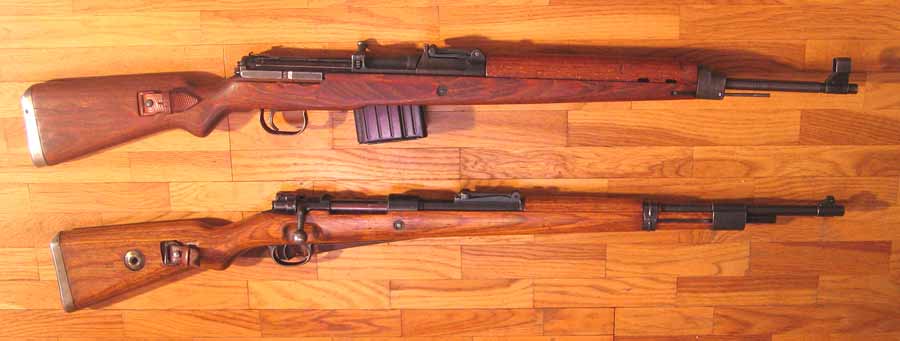 |
| Top: Gewehr 43 (G43) |
| Year Built: 1943-1945 Calibre: 7.92x57mm Load: 10 rounds / Magazine fed Action: Semi - Automatic, Gas - Operated, Air Cooled Scope: ZF4 (at the bottom to the right) Weight: 4 kg wo scope |
| The G43 was intended to replace all K98
and it was Germany's first real attempt at developing a standard sniper arm utilizing the zf4 and zf4 k43 series of 4 power scopes. Even so, sniping effectiveness with the G43/zf4 was disappointing, mostly due to the rushed service of components. The kar 98k still proved to be the preferred sniping arm. |
| Bottom: Karabiner K98k (K98) |
| Year Built: 1935-1945 Calibre: 7.92x57mm Load: 5 rounds / stripper clip fed Action: Repeater Scope: As sniper rifle with various scopes. Weight: 3,8 kg |
| The Karabiner 98k was a German rifle
introduced into general service in 1898. It was a result of the experiences the Germans got during the Great War. The barrel was shorter to fit the burning of the cartridge. It had an improved sight and the bayonet was fitted directly to the stock in a way not to disturb the barrel when shooting. The 98K is a bolt action rifle that holds five rounds of 7.9mm on a stripper clip. It was the primary German infantry rifle in both world wars, and was noted for its excellent accuracy and effective range of 800 meters. For this reason it continued to be used with a telescopic sight as a sniper rifle, after it was obsolete as a standard weapon.
Special article in Swedish |
 |
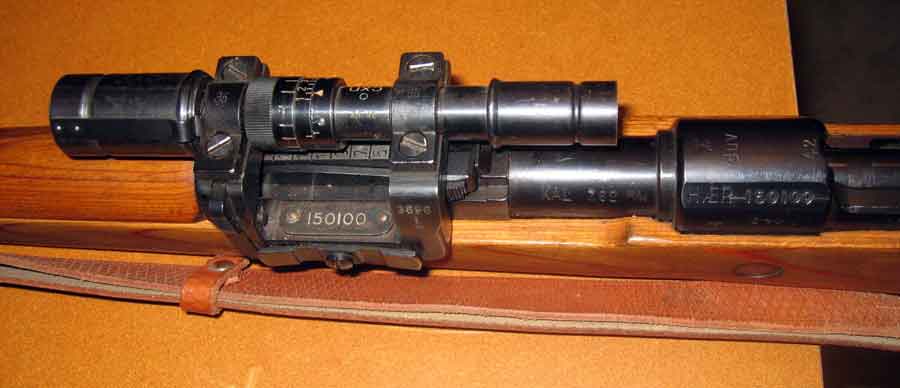 |
|
After the invasion of
Poland in September 1939 the German Army realised that there was a need for
a scope to improve accuracy. The result was this rifle and scope
combination.
This rifle was left behind and was used by the Norwegian Army after the war and was rebarrelled to 30-06. |
| Sturmgewehr 44 (StG44) |
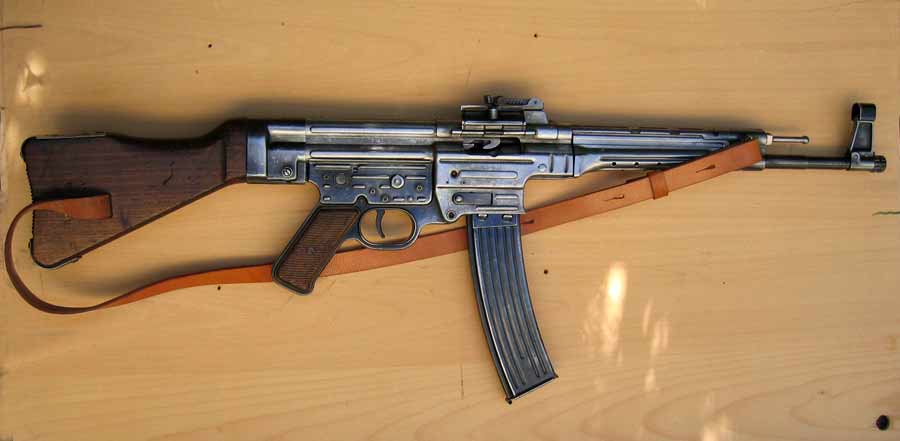 |
|
Year Built: 1944-1945 Calibre: 7.92x33 mm Load: 30 rounds / Magazine fed Action: Semi / Fully-Automatic, Gas operated, Air Cooled Rate of Fire: 500-600rpm Weight: 5,2 kg |
| The Sturmgewher 44 was the world's first
true assault rifle and was introduced by the German army late in WWII. It was the direct inspiration for the Russian AK47, the most prolific gun in the world. If the war had continued another year, the SG44 would have replaced every other rifle and submachine gun in the Wehrmacht. The assault rifle proved an invaluable weapon, especially on the Eastern front, where it was first deployed. Special article in Swedish |
| Machinepistole 28/II (MP28/II) |
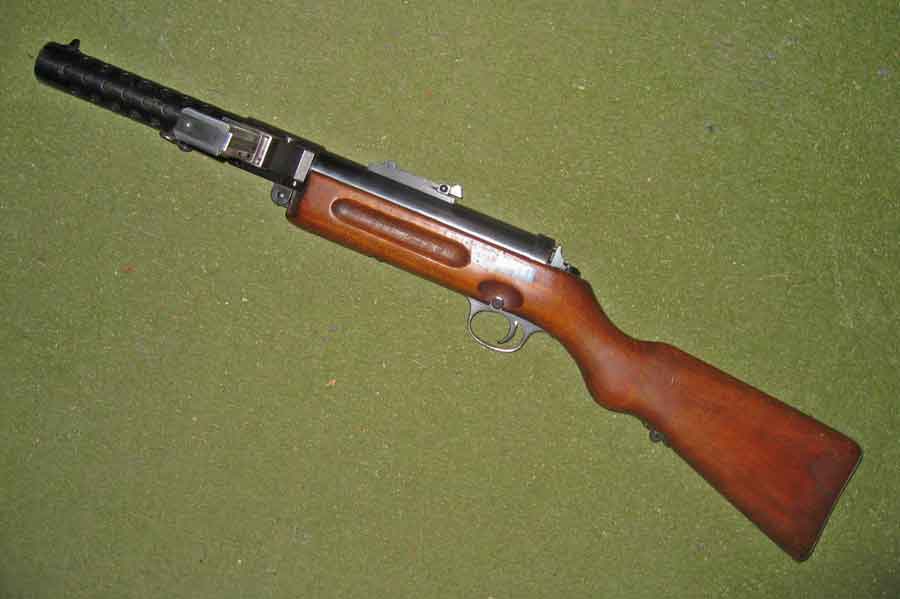 |
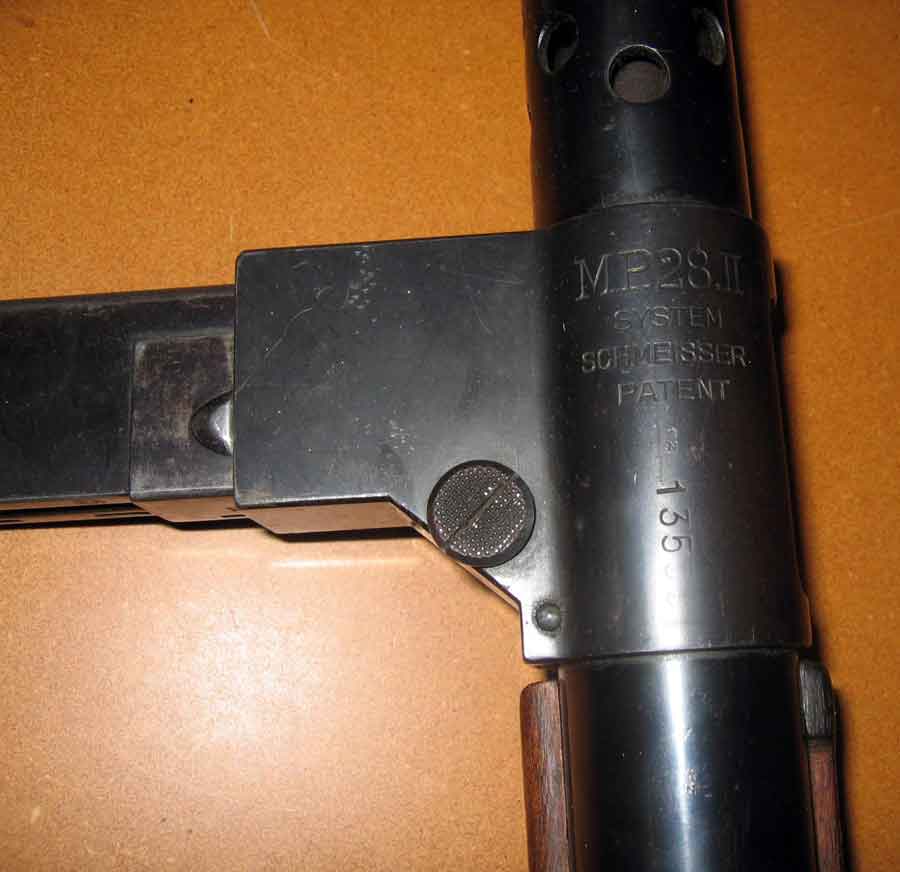 |
| Year Built: Calibre: 9mm Load: 32 rounds / Magazine fed Action: Singleshot/Fully-Automatic, Blowback Weight: 9.5 lbs |
| Machinepistole 34/0 (MP34/0) on top and Machinenpistole EMP (Erma) |
 |
|
Top:
Machinepistole 34/0 (MP34/0) Bottom: Machinenpistole EMP |
| Machinepistole 35/I (MP35/I) [Similar to MP34/I] |
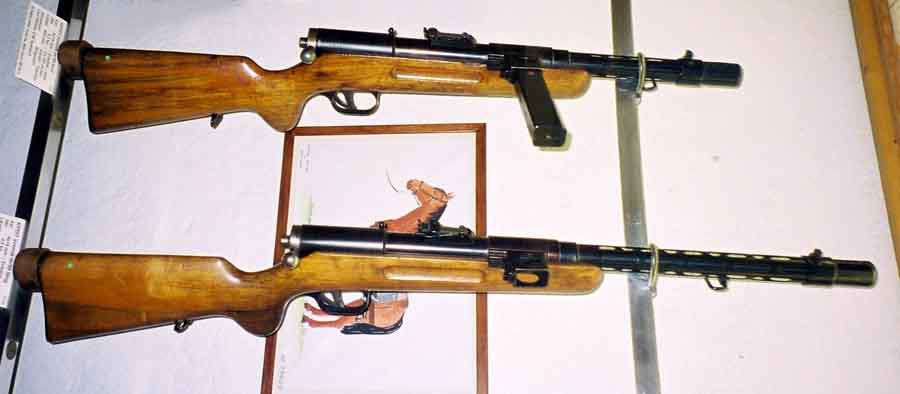 |
| Year Built:
1939 Calibre: 9mm Carl Wahlter Zella Mehlis system Bermann Load: 32 rounds / Magazine fed Action: Singleshot/Fully-Automatic, Blowback Weight: 4.2 kg |
| Machinepistole 38/40 (MP38/40) |
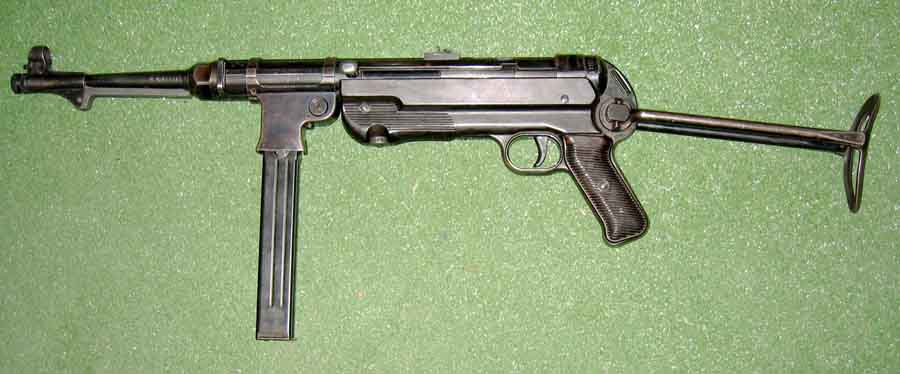 |
| Year Built: 1939-1945 Calibre: 9mm Load: 32 rounds / Magazine fed Action: Fully-Automatic, Blowback Weight: 8.9 lbs |
|
This was the first weapon using the new technique of stamped steel to make more effective and cheaper production. MP38 was produced in the old fashion way while MP40 was made at large extent from stamped steel The MP38/MP40 was wrongly called
"the Schmeisser" by allied troops, MP40 became the first weapon successfully produced by the new methods with stamped steel. It was also very effective for close range fighting, because of its rapid rate
of fire.
|
| Machinepistole 41 Haenel (MP41) |
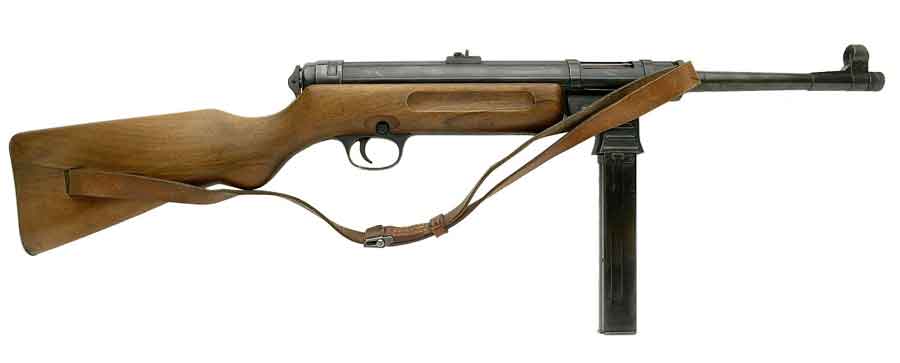 |
| Year Built: 1941-1945 Calibre: 9mm Load: 32 rounds / Magazine fed Action: Fully-Automatic, Blowback Weight: 8.15 lbs Courtesy of Stephen Petroni This was a real "Schmeisser" developed at Haenel by Hugo Schmeisser. It was made in limited numbers and it was used by the Waffen-SS and for export. It has the same receiver, bolt and barrel assembly like MP40. The stock and trigger mechanism come from the Schmeisser construction MP28/II. |
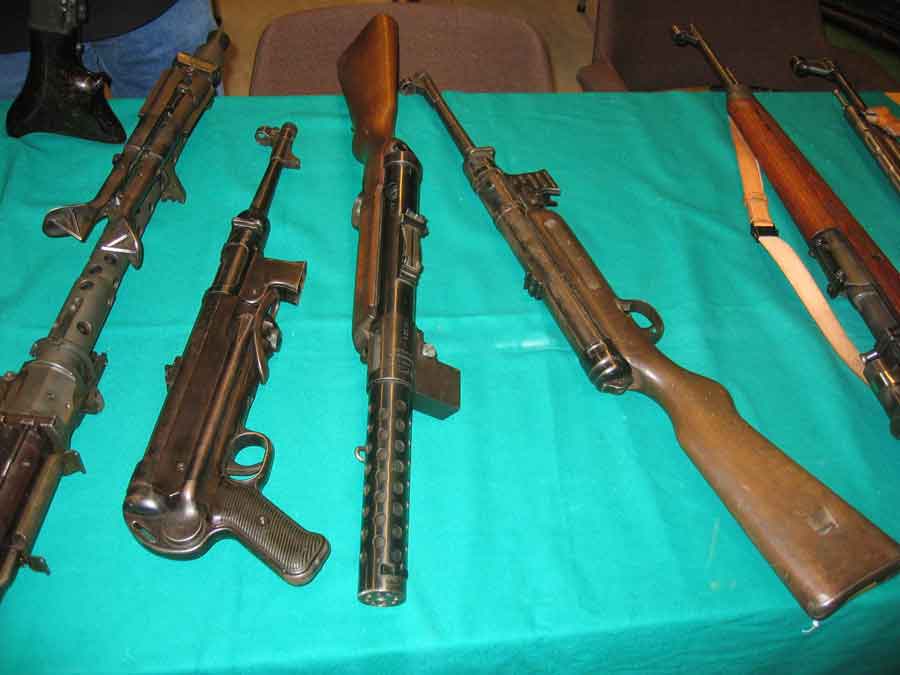 |
|
Here are some of these German guns. The picture was taken at one of our meetings. Below you will find some more - from our meetings. |
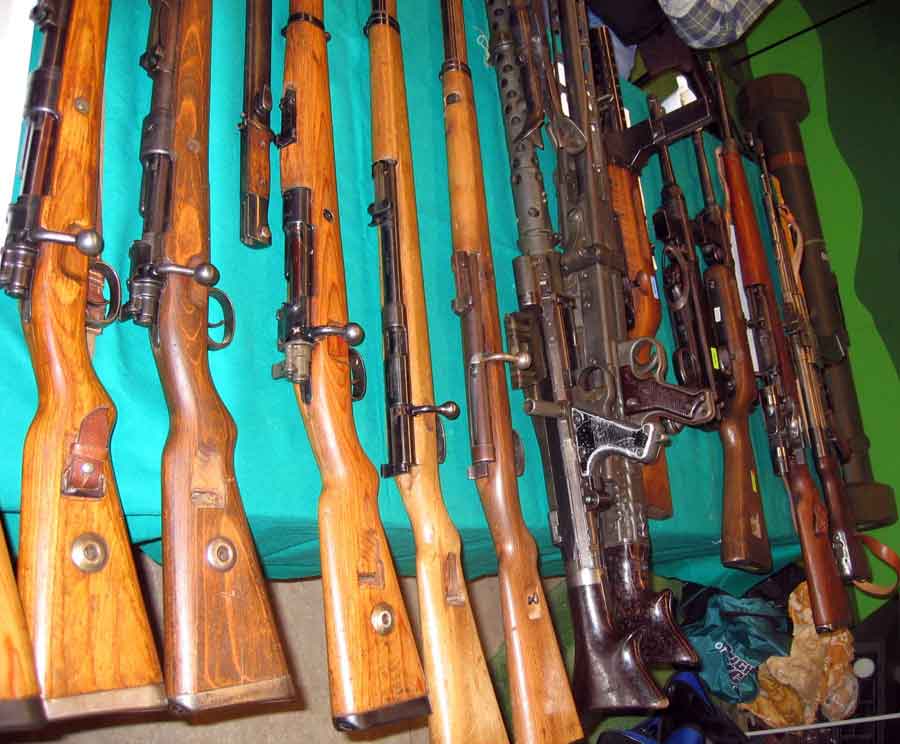 |
| FG.42 44 (FG.42) |
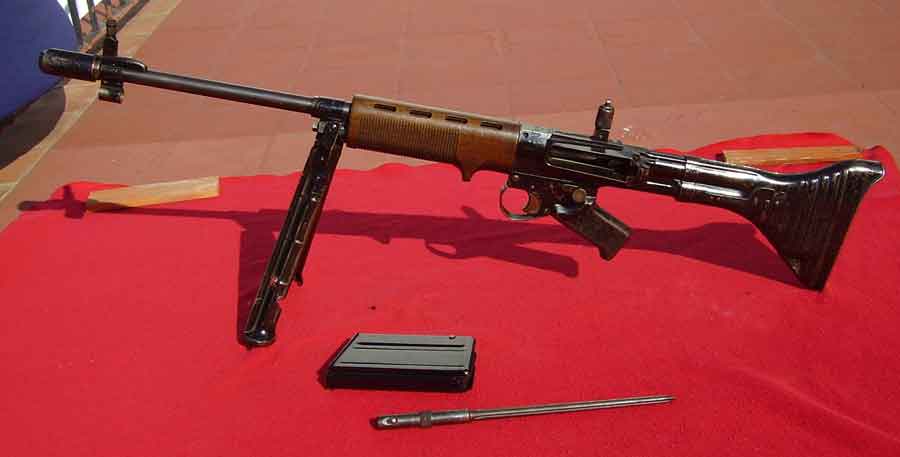 |
|
FG.42 Early model Courtesy of Adrian Gomez.
Year Built: 1944-1945 |
| Special article in Swedish |
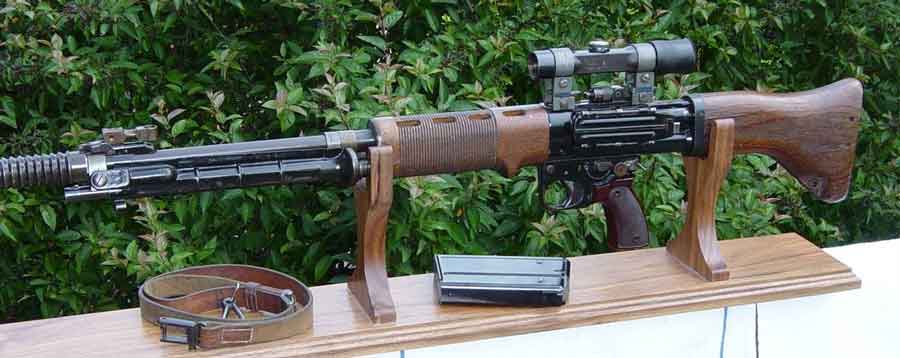 |
|
FG.42 Late model Courtesy of Buddy Hinton |
Go to the page of the partisans - "Hjemmefronten"
German two handed weapons 1939-1945.
Pistols used by the the Germans in Norway and Denmark.